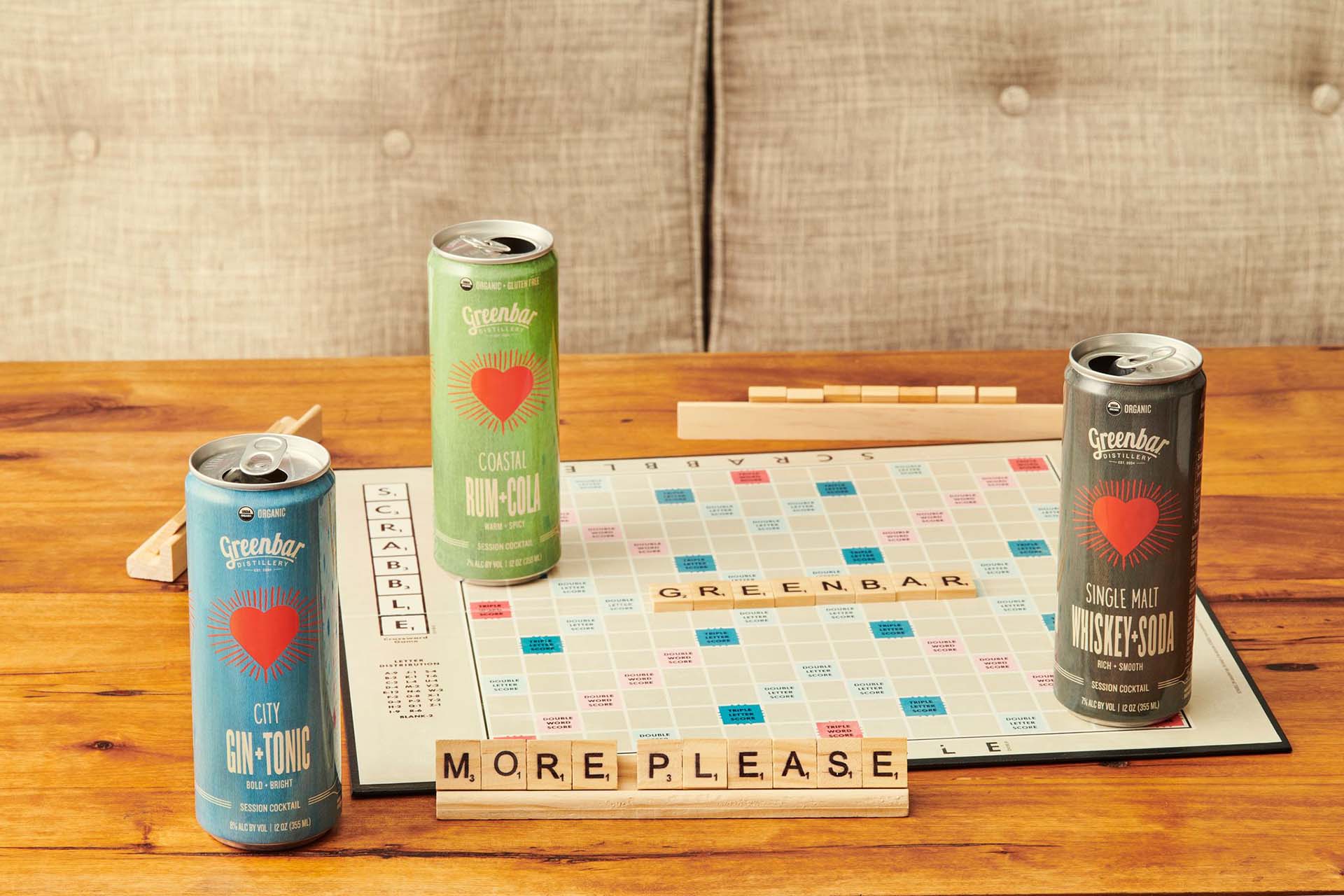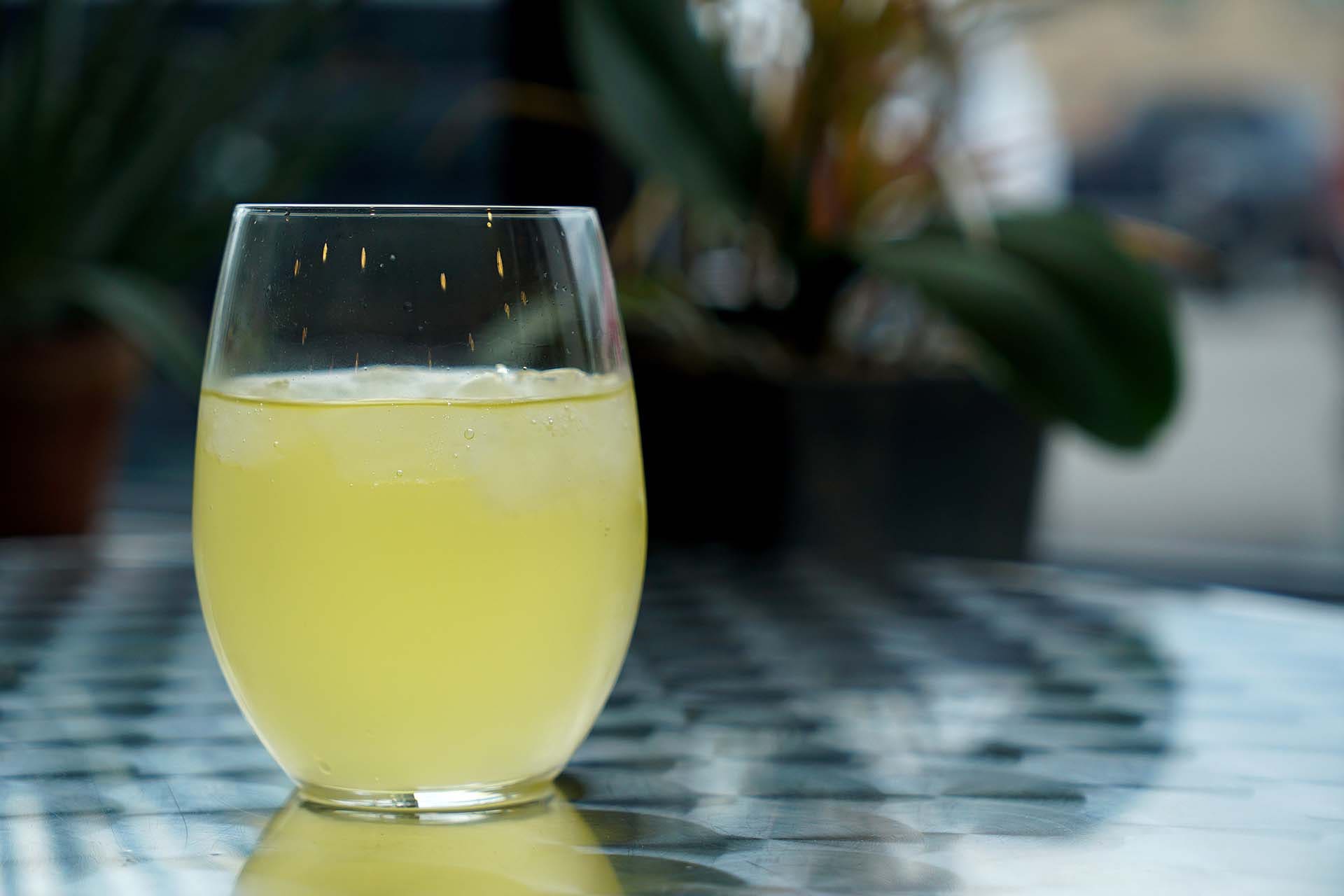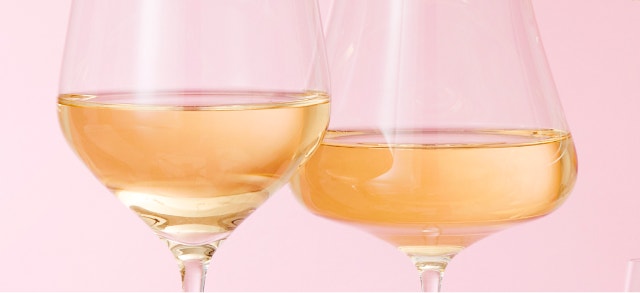Wine Enthusiast |
- Chill Out With These Eight Red Wines for Summer
- Four Summer Cocktails To Toast the Longest Days of the Year
- The Bonfire Old-Fashioned
- The Midnight Sun Dance
- The Wildflower Negroni
- The Vodka Maypole
- What’s Really in Your Canned Cocktail?
- Ancient Grape Varieties Make a Comeback in Lebanon
| Chill Out With These Eight Red Wines for Summer Posted: 18 Jun 2021 04:00 AM PDT  Many people associate the summer with rosé, but there are also red wines perfectly suited to warmer temperatures. These bottlings often emphasize bright fruit flavors and searing acidity, apropos for even the hottest days of the year. The next time you’re choosing what to drink in the heat of summer, and want something with a little more heft than your average rosé, pop open one of these light and refreshing reds. Don’t be afraid to serve them chilled, too. Savage Grace 2019 Cru Carbonic Red Willow Vineyard Cabernet Franc (Yakima Valley); $34, 92 points. This is a one-of-a-kind wine, carbonic macerated from one of the state’s top vineyards. There are upfront aromas of green pepper, peat, cranberry, pomegranate and strawberry. Light, bright flavors follow, with an intriguing, grainy, almost tacky feel. Food required. Pair it with grilled flank steak with chimichurri. Editors' Choice. —Sean P. Sullivan The Adroît Initiative 2019 Carbonic Mourvèdre (Chalone); $30, 92 points. The current carbonic craze often produces similar tasting wines, so it’s refreshing to see it applied to Mourvèdre, whose rustic soul brings new flavors. Light in the glass, this bottling moves from strawberry, hibiscus and dried meat on the nose to tea spice, oregano and thyme on the palate. That earthy edge is not so common for the fruity carbonic style. Editors' Choice. —Matt Kettmann Woodward Canyon 2018 Estate Barbera (Walla Walla Valley); $32, 92 points. This variety is an extreme rarity in the state let alone in the valley, though this producer has been making it for more than 20 years. The fruit-forward notes of cherry, dark raspberry and bramble capture the attention. Bright, tart, acidity-driven flavors deliver. It’s thoroughly delightful. Pizza anyone? Editors' Choice. —S.S. Two Vintners 2018 Make Haste Olsen Vineyard Cinsault (Yakima Valley); $25, 91 points. The aromas boast notes of freshly peeled Satsuma orange, funk, crushed flowers, black olive and peat. The palate is richly flavorful while retaining elegance. It sticks around on the savory, orange peel and flower-filled finish. —S.S. Allan Hancock 2019 Pinot Noir (Santa Barbara County); $18, 90 points. Rusty aromas of tart cherry meet with wild mint, thyme, pine and forest floor on the engaging nose of this bottling. The wild cherry and sagebrush combination shines on the palate, which is refreshing, zippy and pleasantly tart. —M.K. The Hermit Ram 2018 Whole Bunch Pinot Noir (North Canterbury): $32, 90 points. Brace yourself. The defining feature of this minimal intervention wine is not the whole bunch character—it’s the acidity. Everything else takes a back seat. Sure, there’s tightly held red fruit, earthy, herbal and saline notes, with a general rustic, stripped back vibe. But this wine is all about that thirst quenching acidity that crunches and crackles and makes the acid-hounds amongst us crave another sip. Wine Dogs Imports LLC. —Christina Pickard We Recommend: Gorghi Tondi 2019 Dumè Frappato (Sicilia); $20, 90 points. Mouthwatering aromas of crushed, ripe strawberry and white pepper follow over to the tangy, savory palate along with a hint of orange zest. It’s fresh and incredibly easy drinking, with lively acidity and pliant tannins. It closes on an almost salty note. Sheehan Brothers. —Kerin O'Keefe Halos de Jupiter 2018 Grenache (Costières de Nîmes); $14, 89 points. Rose petals and raspberry perfume this fruity, forward varietal Grenache. It offers all the juicy, easy fruit that you want from a quaffable red but it’s elegant and nuanced too, etched by whiffs of dried thyme, mint and a subtle mineral finish. At peak now–2024. Saranty Imports. Best Buy. —Anna Lee C. Iijima |
| Four Summer Cocktails To Toast the Longest Days of the Year Posted: 18 Jun 2021 03:30 AM PDT  Take solace in the solstice, and reimagine summer as people in Nordic countries do: as a long afternoon that unfurls into the midnight sun. Celebrate with close friends around a bonfire on the beach, and pick wildflowers to garnish drinks. The following cocktails draw inspiration from traditions that mark the longest, most delicious days of the year in Sweden, Finland, Norway, Denmark and Iceland. |
| Posted: 18 Jun 2021 03:25 AM PDT  With roots that date to the seventh century, some of the earliest Midsummer traditions celebrated the defeat of darkness by the sun god. Bonfires were part of the celebration, thought to ward off evil spirits and dark forces, and also to bring luck. At heart, this is a classic Old Fashioned. Although Bourbon is the standard-bearer for this drink, consider a Scandinavian whiskey like Spirit of Hven's Tycho's Star or High Coast ALV, both Swedish single malts. You could also experiment with a barrel-aged aquavit like Norway's Linie as the base. The flamed orange peel adds a caramelized note and requisite incendiary flourish. |
| Posted: 18 Jun 2021 03:15 AM PDT  Inspired by the midnight sun, those few weeks during the summer when the sun never sets above the Arctic Circle, Fanny Chu built this festive sparkler with summer nights in mind. "When I think of summertime, I always think of strawberries, s'mores and campfires, especially by the beach," says Chu, who was a bartender at Donna in Brooklyn, NY, before it closed. She compares the midnight sun with the way a glowing moon can illuminate the sky. Her drink draws smoky tones from a peated Islay Scotch. Courtesy Fanny Chu, liquid stylist, New York City |
| Posted: 18 Jun 2021 03:00 AM PDT  A flower wreath for summer celebrations is meant to symbolize rebirth and the abundance of the earth after the long Nordic winter. The solstice is also a time to gather medicinal herbs, notably St. John's wort, which has yellow blossoms that evoke the summer sun. The Wildflower Negroni, a riff on the classic White Negroni, makes the most of flowers and herbs, as it gilds the botanicals found in gin with a quick tea-based infusion. A version of the drink appears in Spirit of the North, a Scandinavian-inspired cocktail book written by Danish native Selma Slabiak, a bartender in Queens, New York. She recommends a gin that has floral notes like the rose petal-infused Dorothy Parker Gin. Adapted from Spirit of the North: Cocktail Recipes and Stories from Scandinavia (teNeues Publishing Company, 2018), by Selma Slabiak |
| Posted: 18 Jun 2021 02:45 AM PDT  Throughout many parts of Europe, tall leaf- and flower-adorned maypoles were raised to welcome summertime and signal hopes for a bountiful harvest. Briana Volk, proprietor of Portland Hunt + Alpine Club in Portland, Maine, remembers seeing a maypole when she attended the annual Scandinavian Festival in Astoria, Oregon. "As a child, I would go with my Finnish grandparents to watch the crowning of the festival's Miss Scandinavia, eat baked goods, dance to accordion music and see the maypole be raised," she says. "The festival was always the highlight of my summer." Her homage is a boozy parfait that layers fresh berries with crushed ice and gets topped with vodka, kombucha and peach. For those who seek a project, Volk suggests swapping kombucha for sima, a Finnish fermented drink flavored with lemons. Courtesy Briana Volk, proprietor, Portland Hunt + Alpine Club, Portland, ME |
| What’s Really in Your Canned Cocktail? Posted: 17 Jun 2021 05:00 AM PDT  Whatever your preferred cocktail, odds are there's a version available in a can. In 2020, canned cocktail sales surged 52.7%, according to IWSR, a drinks market analysis firm. Consumer demand grew during the pandemic, as bars and restaurants closed and people pursued outdoor activities. The popularity of hard seltzer has also created enthusiasm for ready-to-drink (RTD) canned beverages. The overall RTD category, which includes hard seltzers, grew 62.3% in 2020, according to IWSR. While many are enjoyable, canned cocktails don't always taste quite like drinks made at bars or at home. In fact, some taste markedly different.  In general, a wide range of ingredients are added or removed from canned cocktails for safety and shelf stability. Citrus tends to degrade and oxidize, so a complex mix of acids, sweeteners, flavorings and colorings may be used to reconstruct the effect of lemon or lime. "Juices, teas and honey all are challenging," says Scott Weddle, director of business development for Flavorman, a flavor formulation company in Louisville. "These ingredients are common in cocktails and can naturally have a higher microbial load than some other ingredients might."
Other canned drinks are completely re-engineered, compared to standard cocktails. Aaron Polsky is founder of LiveWire Drinks, a Los Angeles-based canned cocktail company that spotlights drinks sourced from bartenders. His canned drinks are formulated with more water than standard drinks, which would typically be shaken with ice. "In a bar, I make it, they drink it," says Polsky. "I have control over the final serving temperature. With a can, it has to taste good over a range of temperatures…The levels of water, acid, sugar and alcohol were designed so that if someone pulled it out of an ice bath, or took it in a cooler, it still has to taste good." There are many components that can affect canned cocktails. AcidsMost often, citric, malic, tartaric and/or phosphoric acids are used in place of fresh citrus to give brightness and acidity. "Fresh natural juices, especially citrus—lemon, lime, grapefruit, orange—just don't have shelf life in a can or bottle," says Melkon Khosrovian, cofounder of Greenbar Distillery. The Los Angeles-based facility cans 11 drinks, none of which require citrus or replacement acids. "It breaks down within a matter of weeks," says Khosrovian. Citric acid is most commonly used to replicate the tartness and sourness that citrus would typically provide, though it doesn't add citrusy flavor. It's also sometimes added to balance out sugar, control pH or lengthen shelf life. "It's important to get [a canned cocktail] to a relatively low pH," says Weddle. "It makes the environment less hospitable to microbial growth." Alcohol BaseIs the base of your canned cocktail a quality distilled spirit or malt beverage? The latter are increasingly common. Malt beverages are fermented and brewed like beer, and they're considered beer by U.S. regulators. They skip the extra step of distillation needed to be considered a spirit. This doesn't mean that they're bad, but a malt beverage-based "margarita" won't drink quite like a Tequila-based version. Even when spelled out, like in a canned gin & tonic, some producers purchase a neutral alcohol base and add juniper oil or other flavorings, or combine a gin concentrate to dilute with tonic syrup and water.  Chemical PreservativesIf a canned drink is less than 10% alcohol by volume (abv), it's more likely that preservatives are used to ward off microbial growth. Potassium sorbate, sodium benzoate and other preservatives are often added at very low levels, and there's no flavor impact, Weddle says. Some producers are working on natural preservatives, but Weddle is skeptical about their effectiveness. "There hasn't been any great data that anyone's cracked that nut so far, but there's lots of great work going on, so we're hopeful," he says. Carbon DioxideUsed to make cocktails bubbly, carbon dioxide can also add a touch of sourness, says Khosrovian. "It adds bite, a sharpness to the palate." That's often considered desirable, as in naturally carbonated mineral water. "We typically overcarbonate our drinks, compared to others," says Khosrovian. "We make ours for bubble lovers." ColoringsMany canned cocktails are clear, as white spirits, acids, sweeteners and chemical additives don't tend to add color. Some selections have a naturally dull hue, like those that feature barrel-aged spirits or oxidized fruit juices. Some producers add natural or artificial colors to brighten up drinks. "Think of those 100 different colors of Gatorade," says Weddle. "You can get any color in the rainbow." Those colors come from artificial dyes like FD&C No. 5. Usually, there's no flavor or texture impact. Natural colors derived from fruits and vegetables are less stable. They may fade and brown over time. When used in concentrated amounts, they can add flavor, like the purplish hues derived from cabbage, says Weddle. "You can get to the point where you've added so much you can pick up cabbage notes in your berry liqueur." FlavoringsNatural and artificial flavorings help compensate for the lack of juices and other fresh ingredients in canned cocktails. Quality and variety can vary, but examples include limonene or citralene, extracts used to mimic fruit flavors. StabilizersGums and glycerins are used to add texture. Gums can thicken a drink, so particles like black pepper can be suspended in a canned Bloody Mary. Glycerin is used to add a slick or "smooth" sensation. It's often added to gin-based cocktails to take off the edge. It's a type of sugar, and it may add a trace of sweetness.  SweetenersLike in a freshly made cocktail, sweeteners add flavor. While bartenders might reach for sugar, often in the form of simple syrup, agave or honey, the range of sweeteners used in canned drinks is even wider. If a Flavorman client specifies a sugar-free drink, the company might formulate it with stevia, monkfruit or sucralose. These substances are tricky because they can add bitter notes at the finish. "The sweetener can drastically change the flavor," says Weddle. High-fructose corn syrup is also common. Though not used in Greenbar’s line at press time, Khosrovian says that he's found that it can have a muting effect. "It was like throwing a blanket over flavors," he says. "You couldn't taste them as vividly." As a result, Khosrovian says that manufacturers of artificial flavorings concentrate fruit notes or other products at higher strengths to compensate. |
| Ancient Grape Varieties Make a Comeback in Lebanon Posted: 17 Jun 2021 04:24 AM PDT  Long recognized for their instrumental role in the spread of wine across the ancient Mediterranean world through trade and transport, recent archeological findings have verified that the Phoenicians produced their own wine in what's now Lebanon as early as 7th century B.C. "There was a history of wine [in Lebanon] before the French came," says Farrah Berrou, a Lebanese wine expert and host of B is for Bacchus, an educational wine podcast. "They revived it, but it was the Phoenicians who introduced wine to Europe, not the other way around." Romans would eventually bring wine back to the Levant and build a towering temple to Bacchus, their god of agriculture, wine and fertility, in Baalbek, Lebanon, sometime between 150–250 A.D. Winemaking then faded until the 1850s, when French Jesuit monks planted vines in the Bekaa Valley. A handful of French-influenced wineries made most of the country's commercial bottlings for decades, but that's beginning to change. Wineries in Lebanon have doubled in the last 25 or so years, and a younger generation of winemakers now looks to boost Lebanon's vinous identity in the wine world. While French varieties like Cinsault and Syrah make up the majority of wine production, these winemakers say the future is in native grapes. Here are three to know, and a few producers to watch. ObaidehThis white grape is low in acid and high in sugar. Historically used mostly to produce arak, an aniseed liqueur, it's now becoming a popular choice for wine production. Sept Winery and Coteaux du Liban make creamy, sweet wines that taste like honey and lemons, and they also experiment with skin-contact styles. MerwahRelated to Sémillon, Merwah grows in Lebanon's mountains. Like its cousin, it produces rich, nutty and floral wines. The country's oldest winery, Chateau Ksara, makes a version from 60-year-old vines, while Mersel Wine produces an interesting pét-nat from a blend of Merwah and Viognier. SabbaghiehWith a name derived from sabgha, meaning "dye" or "stain," this red grape's skin is dark crimson due to high levels of anthocyanin pigments. Characterized by red fruit flavors and vegetal aromas, it's often blended with Cabernet Sauvignon. |
| You are subscribed to email updates from Wine Enthusiast. To stop receiving these emails, you may unsubscribe now. | Email delivery powered by Google |
| Google, 1600 Amphitheatre Parkway, Mountain View, CA 94043, United States | |



















0 comments:
Post a Comment